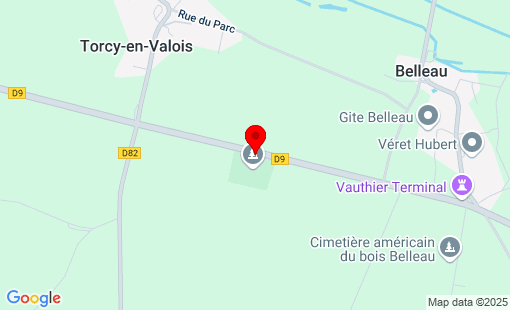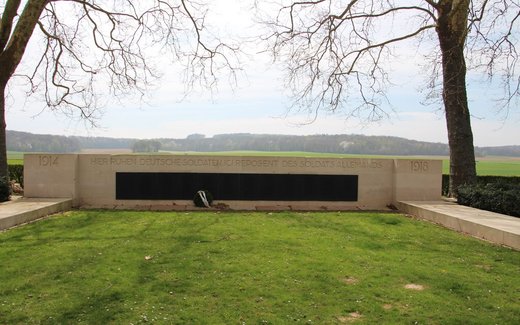France
Belleau
Total Occupation: 8.633 fatalities
Total Occupation: 8.633 fatalities
Open all year round
Département Aisne 8,630 German war dead First World War 2,288 fallen soldiers rest in the neighbouring US military cemetery. The Belleau German military cemetery was established in March 1922 as a collective cemetery by the French military authorities. German dead, whose temporary graves were located between the Chemin-des-Dames and the Marne in no fewer than 123 communal areas, found their final resting place here. 70 of them were victims of the first battle of the Marne in September and October 1914. Only a few burials of German prisoners of war who died took place between the end of 1914 and the beginning of 1918, at a time when Belleau - far from the front - was in the French stage. However, more than 8,500 of those resting here died during the second Battle of the Marne, which began with a major German attack across the Chemin-des-Dames on May 27, 1918. No fewer than 30 divisions as well as artillery and other troops from all countries and provinces of the then German Empire were involved. A further German attack in July and the Allied counter-offensive that began three days later, in which American troops made their first appearance, also caused heavy losses. In total, more than 100 divisions had been deployed on the German side by the end of August 1918. The number of American dead originally amounted to almost 7,000. After the end of the war, however, at the request of the bereaved, almost 4,500 of the dead were transferred to the USA and buried in the national cemeteries there. Restoration work between the wars Thanks to an agreement reached with the responsible French military authorities in 1926, the Volksbund Deutsche Kriegsgräberfürsorge e.V. was able to begin initial restoration work as early as 1927. More than 200 trees and a hedge were planted as an enclosure, the communal graves were surrounded by natural stonework, a new entrance, two entrance buildings and a high cross were erected and the entire grave area was planted with greenery. However, the problem of permanently marking the graves remained unresolved due to a lack of foreign currency and the outbreak of the Second World War in 1939. Final design Following the conclusion of the Franco-German War Graves Agreement on July 19, 1966, the Volksbund Deutsche Kriegsgräberfürsorge e.V. - with financial support from the German government - was able to undertake the final design of the German military cemeteries of the First World War in France. In addition to a fundamental landscaping overhaul, the previous temporary wooden grave markers were replaced in 1972 with natural stone crosses engraved with the names and dates of those buried here. Of the 8,630 fallen, 4,308 rest in individual graves; 22 remain without names. In two communal graves with 4,322 victims, only 487 are known by name. The 15 graves of fallen Jews were given a natural stone stele instead of a cross for religious reasons. The Hebrew characters read: 1. (above) "Here rests buried .... ." 2. (below) "May his soul be interwoven into the circle of the living." Recordings: EUDOR Jean-Rico






